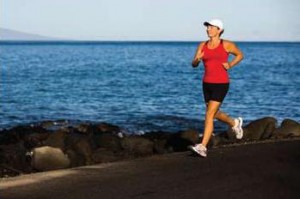Prevention of Running-Related Injuries
 This blog was contributed by Dr. Ernesto Luciano-Perez, race medical director and orthopedic surgeon with Virginia Orthopedic & Spine Specialists.
This blog was contributed by Dr. Ernesto Luciano-Perez, race medical director and orthopedic surgeon with Virginia Orthopedic & Spine Specialists.
As healthy lifestyles become more popular, more people are turning to running in some capacity as a primary way to seek fitness. It is estimated that 10-20 percent of Americans run regularly and as that number grows, so does the incidence of running-related injuries. Fifty percent of runners experience injury yearly and 25 percent are injured at any given time. Certain factors are associated with running-related injuries, and prevention has become the key to maintaining a healthy running lifestyle.
Studies among novice runners have revealed multiple risk factors for injuries. Risk factors include:
- Being between the ages of 45 and 60
- Having a body mass index greater than 30
- Having previous non-running related injuries
- Possessing a type A personality
- High weekly running mileage
In addition, anatomical factors can influence the prevalence of injuries. The literature shows that cavus foot shape (or high arched feet) can lead to stress fractures and foot pain; leg length inequality can lead to hip, pelvis, IT band, and lower back discomfort; and hip muscle weakness, especially the hip abductors, can lead to hip and knee pain.
The key to enjoying running long term is the prevention of injuries. Many specialists recommend either off-the-shelf or custom-made orthotics. The orthotic can help by correcting biomechanical pathology, by adding additional cushioning to the foot, and by prolonging time to muscle fatigue during long distance training. All of these combined may ultimately prevent stress fractures and other foot pain. Recently, multiple studies are showing a decrease in morbidity with the use of specific shoes to fit foot type and gait patterns. For example, motion control shoes are recommended for over-pronators. Physical therapy is sometimes recommended to help with weakness in different muscle groups. It is shown that rehabilitation programs can totally resolve symptoms in six weeks or less. These programs then aim to build a maintenance program to prevent further injury including stretching routines pre- and post-training.
Perhaps the most important factor related to prevention of running-related injuries is following a proper training schedule. Programs involving greater than 40 miles per week are often associated with an increase incidence of pain. It is also important to avoid erratic training schedules. The sudden increase in weekly distance is correlated with a higher probability of sustaining running-related injuries. In addition, changing the type of training from flat ground running to hills or interval training to long distance also can show an increase in injury.
While running has many benefits to our overall health, it is important to train in a healthy way. Continuing to train during injury can often lead to longer injury time. It is important to adopt specific preventative measures into your running lifestyle to maintain a long running career.

